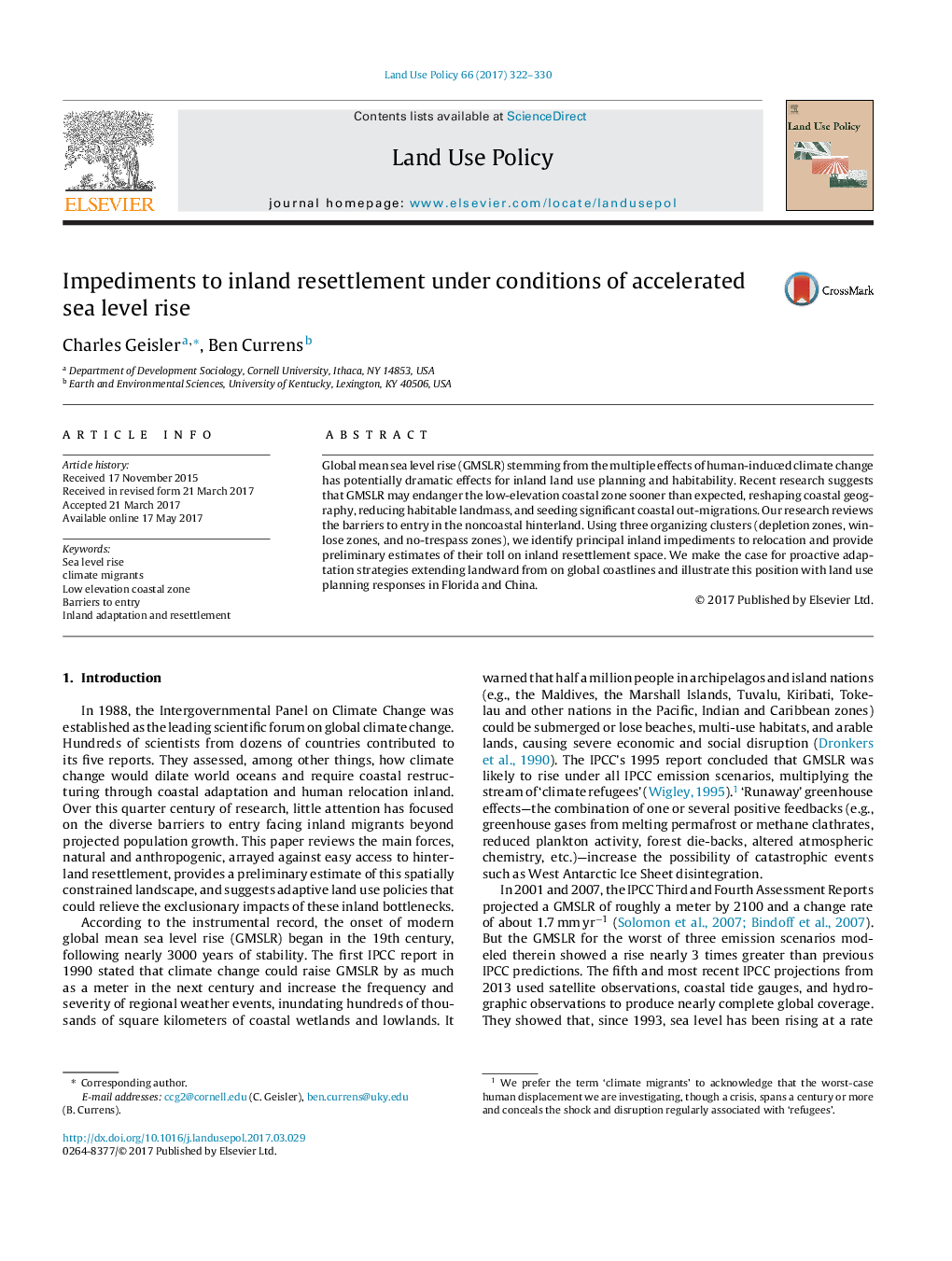| Article ID | Journal | Published Year | Pages | File Type |
|---|---|---|---|---|
| 6460946 | Land Use Policy | 2017 | 9 Pages |
â¢Global mean sea level rise may dislocate hundreds of millions of people by 2100.â¢Inland landscapes have significant barriers to entry for coastal climate migrants.â¢Preliminary estimates of impeded inlands exceed one-third of total global land.â¢Proactive, adaptive land use policies are imperative on coasts and inland.â¢Two on-going cases of adaptive land use policies (Florida and China) are reviewed.
Global mean sea level rise (GMSLR) stemming from the multiple effects of human-induced climate change has potentially dramatic effects for inland land use planning and habitability. Recent research suggests that GMSLR may endanger the low-elevation coastal zone sooner than expected, reshaping coastal geography, reducing habitable landmass, and seeding significant coastal out-migrations. Our research reviews the barriers to entry in the noncoastal hinterland. Using three organizing clusters (depletion zones, win-lose zones, and no-trespass zones), we identify principal inland impediments to relocation and provide preliminary estimates of their toll on inland resettlement space. We make the case for proactive adaptation strategies extending landward from on global coastlines and illustrate this position with land use planning responses in Florida and China.
